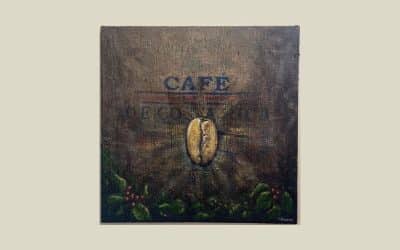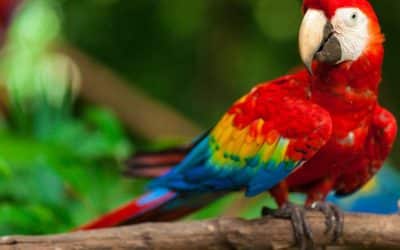Short answer: Northern countries label seasons by daylight and temperature, while Costa Rica names them by rainfall—hence December–April is “summer” here.
What do “winter” and “summer” actually mean?
Short answer: The meaning changes with the metric you use, light and temperature up north; rain and dryness in the tropics. In temperate zones, winter arrives with the shortest days and the year’s minimum temperatures after the December solstice. In Costa Rica, daily life is closely tied to the water cycle. The dry, blue-sky months of December to April feel festive, outdoorsy, and school-holiday friendly, so people call them “verano” (summer). The wetter months, May to November, are “invierno” (winter), not because of cold, but because rain shapes routines.
Why do Northern countries call December–February “winter”?
Short answer: Short days and a low Sun deliver cold weather and cultural cues. Across Canada, the UK, and Scandinavia, the Sun’s shallow arc slashes daylight, locking in frost and snow. Culture follows climate: ski seasons, solstice traditions, and school calendars entrench the label.
You see it in daily life, gritted roads, thermostats nudged up, gardens sleeping under frost. Even sport and food change tempo: indoor leagues thrive and hearty stews return to the table.
So why does Costa Rica call December–April “summer”?
In short, it’s the dry season with big, blue skies, so holidays, travel, and outdoor life are at their peak. Trade winds sweep in drier air, surf is often glassy in the mornings, and paths to volcanoes stay firm underfoot. Schools take their long break around this period, reinforcing the “holiday equals summer” link for families and businesses alike.
- Blue-sky reliability on the Pacific side
- Long school holiday (Dec–Feb) fuels domestic travel
- Peak visitor season for beaches, national parks, and sailing
Is Costa Rica in the Northern Hemisphere—shouldn’t it be “winter” too?
Short answer: Yes, but near-tropical latitudes flatten daylight swings, making rain the real seasonal driver. Costa Rica has roughly 11½–12½ hours of daylight all year. Without big light and temperature swings, people organise their lives around rainfall patterns, not the thermometer.
- Minimal daylight variation throughout the year
- Microclimates split the country: Pacific vs Caribbean
- Temperatures stay moderate; precipitation sets the rhythm
What does “summer” mean in Costa Rican life?
Short answer: Sun-soaked weekends, road trips, and easy logistics for adventure. Families head to Guanacaste’s golden arcs, divers enjoy clearer Pacific visibility in many spots, and hikers find dry trails at Rincón de la Vieja or Tenorio. Weddings, concerts, and food fairs spill outdoors, and tourism operators scale up to meet demand.
Think picnic coolers and sandy feet in January—socially, it feels like July in the UK or August in France, even if the calendar says otherwise.
What’s similar to Northern “summer” during Costa Rica’s dry season?
Short answer: The vibe matches: beach culture, alfresco meals, festivals, and late, warm evenings. The wardrobe flips to linen and sandals, catamarans fill at sunset, and the country’s mood centres on sea, sand, and relaxed schedules.
- Shared habits: barbecues, sundowners, open-air gigs
- Peak travel energy: hotels full, parks lively
- Water time: surfing, paddleboarding, sailing, snorkelling

What about the Caribbean side and the “mini-summer”?
Short answer: The Caribbean coast runs to its own beat, often clearer in September–October; a brief national “veranillo” can pop up in late June or early July. These pulses are part of Costa Rica’s microclimate magic, letting savvy travellers time picture-perfect windows beyond the classic dry months.
How should travellers time a trip?
Short answer: Pick December–April for near-guaranteed sun on the Pacific; choose May–November for lush scenery, wildlife drama, and value. The green season rewards patient planners with waterfalls in full voice, brilliant forest hues, and quieter trails—mornings for adventure, afternoons for café time while showers pass.
- Dry season (Dec–Apr): effortless beach days, sailing, hiking
- Green season (May–Nov): vibrant landscapes, fewer crowds, better prices
- Caribbean exception: tempting clarity in Sep–Oct
Does “summer” in Costa Rica change culture and business?
Short answer: Yes, schools, tourism, agriculture, and events pivot around the dry months. Graduation trips, festival programming, planting and harvest windows, and even marketing calendars all align to “summer” and “winter” in the local sense.
First-timer tips
Short answer: Pack for sun year-round and plan around rain, not cold. Even in highlands, a light layer handles most evenings; your must-haves are sun protection and a flexible plan in the green season.
- Reef-safe sunscreen, hat, quick-dry clothing
- Light rain jacket (May–Nov) and early starts for tours
- Book early for December–March on the Pacific
FAQ
Is Costa Rica ever cold?
Highlands can feel crisp at dawn, but you’ll rarely need more than a light jumper.
Does it snow in Costa Rica?
No. Peaks may see frost, but snow isn’t part of the climate.
Is the rainy season bad for travel?
No—just plan mornings for activities and keep a rain layer handy.
Which coast is sunnier in December?
Typically, the Pacific; always check local forecasts.
Why say “invierno” for the wet months?
Because rain, not temperature, sets work, school, farming, and the language that goes with them.






